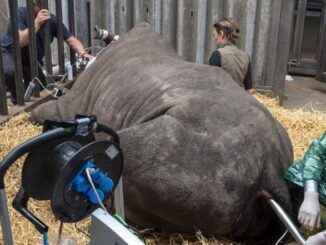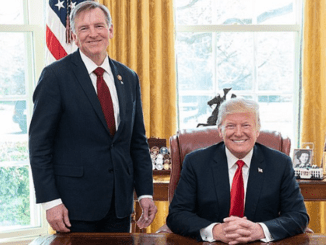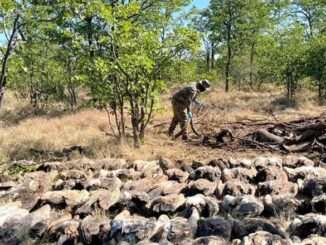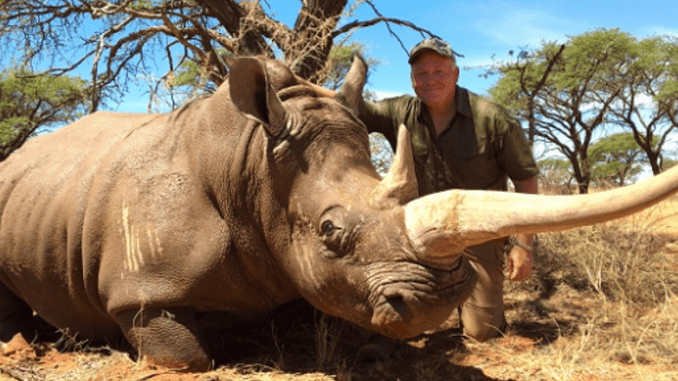
JOHANNESBURG, South Africa, March 29, 2022 (ENS) – The High Court of the Western Cape Friday ruled against South Africa’s Department of Forestry, Fisheries and the Environment on its 2022 hunting and export quotas for leopard, black rhino and elephants. The application for the hunting and export quotas was brought by animal protection organization Humane Society International-Africa, which argued that the DFFE failed to comply with the consultative process prescribed by the National Environmental Management: Biodiversity Act 10 of 2004 when making the quota decision.
HSI-Africa argued that the 2022 trophy hunting quotas – 10 black rhinos, 10 leopards and 150 elephants – as set February 25 by the DFFE Minister Barbara Creecy, were unlawful because:
- The DFFE announced the quotas on February 25 without consulting the public, which renders the decision invalid and unlawful;
- The notice for the 2021 quota, which was deferred to 2022 by the DFFE, was defective and thus rendered any quota decisions arising from that process invalid and unlawful;
- The DFFE may not issue a quota for trophy hunting and export of elephant, black rhino or leopard without valid non-detriment findings.
Audrey Delsink, wildlife director for HSI-Africa, says, “We are terribly disappointed that the DFFE is failing in its duty to protect our threatened and endangered wildlife species. It is unacceptable that we allow people to hunt endangered and critically endangered animals for the purpose of collecting their remains as trophies. The claim that trophy hunting contributes to conservation cannot be justified in light of the evidence demonstrating that one-third of South Africa’s hunting trophies are captive bred animals, and most are non-native or species not subject to science-based population management.”
The court’s ruling comes just after the release of a myth-busting report on hunting that questions the government’s claim that bagging wildlife trophies is sustainable.
When trophy hunting is stripped to its essentials, it’s about the desire to kill wild animals – justified by faulty economics. What it is not about is conservation or community upliftment, finds the extensive study by the Africa-wide research organization Good Governance Africa, GGA.
Written by natural resource economist Dr. Ross Harvey, director of Research and Programmes at GGA, the study avoids complex issues of animal welfare and simply asks who benefits from trophy hunting and whether it can be justified in terms of conservation.

Hunting organizations and the DFFE maintain that trophy hunting is of value to both conservation and local communities.
On February 25, Creecy announced that trophy hunting quotas for 2022 had been set for 10 critically endangered black rhinos, 10 endangered leopards and 150 elephants, which are also considered endangered.
“In other words,” wrote Dr. Harvey, “hunters are now at liberty to apply for licenses to shoot imperiled animals that will literally be reduced to wall trophies.”
Creecy’s statement claimed that trophy hunting creates economic incentives that promote conservation. “It also provides a useful wildlife management tool and is used as a means to remove (mostly) excess males from a population, while revenue is generated at the same time to cover the costs of conservation efforts,” she said.
Yet the new Good Governance Africa report questions whether the government has good grounds on which to determine trophy hunting quotas or promote trophy hunting as a conservation tool, especially on economic grounds.
Only adult male black rhinos will be hunted, and only on conservation management grounds in accordance with a set of strict criteria to ensure that demographic and/or genetic conservation is enhanced (as stipulated in the black rhinoceros Biodiversity Management Plan), the minister stated.
“The quota for black rhino is based on the national population estimates for black rhino per subspecies, all three of which show an increasing trend at present. Only a very small portion of the overall elephant population is hunted in a year – less than 80 elephant bulls, which is less than 0.3 percent of the total population. The national elephant herd shows an increasing trend and the quota of 150 is well within sustainable limits,” Creecy explained.
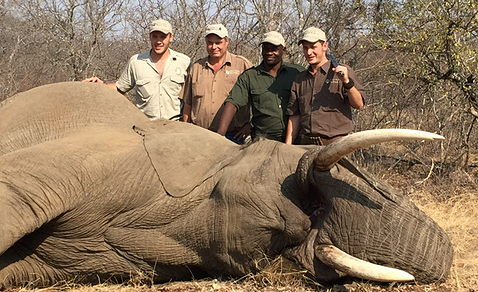
The GGA report was commissioned as an independent study by Humane Society International-Africa (HSI-Africa). Its goal was to ascertain the economic value of trophy hunting against its potential alternatives.
But the study on which the government statement appears to be based indicates that only nine percent of trophy hunting revenue goes directly to low-income households. The GGA report points out that “trophy hunting is a hobby for the wealthy that benefits the wealthy and generates little value for poor rural community members.”
The government’s statement claims that, “Income generated by trophy hunting is especially critical for marginalised and impoverished rural communities.”
This seems to be especially the case in the Associated Private Nature Reserves, APNR, private land parcels joined together on the boundary of the Kruger National Park. Balule, Klaserie, Timbavati and Umbabat all allow trophy hunting, and these make up roughly 90 percent of the APNR surface area. Fortuitously for these wealthy few landowners, the Kruger fence was dropped in 1996. So now, trophy hunting revenue is derived from animals that belong to the South African public.
“This is the very definition of a negative externality – a divergence between private returns and social costs,” the GGA report states. The trophy hunting revenue that accrued in 2019 from these reserves was R45.8 million (US$3.1 million), of which elephant bulls accounted for a full R25.15 million (US$1.7 million).
However, only R17 million (US$1.1 million) goes back into conservation, and only 9.12 percent of that is allocated to community outreach, the GGA reports, adding that employment across all reserves is only 1,738 people.
The GGA report “shows that the idea that only “excess males” will be hunted for trophies is a misnomer,” writes Dr. Harvey. “First, it is doubtful that there is such a thing as ‘excess males’ in free-roaming elephant populations. In a country that is trying to diversify the gene pool of elephants across all reserves, the APNR alone is removing 47 of them per year. Second, hunters are after trophies of animals in their prime. This highlights a governance problem with the industry, in that many lions and leopards are shot below the stipulated age of six years.”
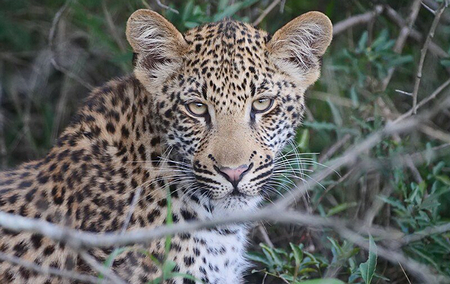
From a purely economic governance perspective, the state’s own ‘sustainable use’ model would require that a ‘Maximum Sustainable Yield’ be established from which to determine a quota of animals that can technically be removed without impairing population growth. Such a number cannot simply be derived on the basis of ‘stable and growing populations’, as the removal of prime males negatively affects elephant populations in myriad ways.
“Moreover,” writes Harvey, “leopards are increasingly being persecuted by game farmers breeding plains game intensively for exotic trophies. This does not advance conservation and brings into question whether wildlife ranching is merely producing game numbers instead of truly advancing conservation.”
The GGA report shows that “the government’s commitment to trophy hunting as a conservation tool on economic grounds is dubious” Dr. Harvey writes.
“The opportunity costs are high and typically unaccounted for in this simplistic promotion of a highly extractive hobby. For the government to argue that ‘hunting is a part of SA heritage and culture’ is sleight of hand. To shoot imperiled species such as leopards, rhino and elephants for trophies is, instead, to promote a colonial practice of extraction, hardly an inherited culture.”
Finally, the GGA paper states that, “There is next to no evidence that trophy hunting has been, or will be, well governed in South Africa. Even if it was, the fact that the practice may directly undermine other economic activities such as non-consumptive tourism, is a good governance reason to abandon the practice and condemn it.”
To read the full GGA report, click here.
— Don Pinnock contributed to this report.
Featured image: A black rhino killed as a trophy in South Africa. Undated. (Photo courtesy Discount African Hunts)
© 2022, Environment News Service. All rights reserved. Content may be quoted only with proper attribution and a direct link to the original article. Full reproduction is prohibited.

